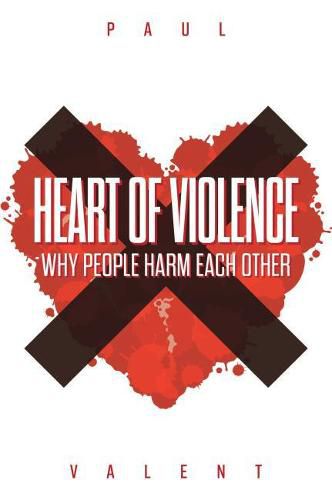Readings Newsletter
Become a Readings Member to make your shopping experience even easier.
Sign in or sign up for free!
You’re not far away from qualifying for FREE standard shipping within Australia
You’ve qualified for FREE standard shipping within Australia
The cart is loading…






Violence is the plague of our civilization. It threatens us daily through its many tentacles: domestic violence, criminal violence, sexual abuse, terrorism, state violence, revolution, war, and genocide. The recently evolved discipline of traumatology has amply described commonalities in the consequences of violence. But there was no corresponding discipline of violentology, which explained why violence occurred in the first place. Inexorably, Valent was drawn to take the leap from healing the minds of victims to try to understand the minds of perpetrators. Valent unpicks the minds of perpetrators in each field of violence. He develops a lens by which to understand violence from individual to international, and from primitive to spiritual dimensions. We come to understand how aggressions that helped our species. Our understanding of violence is enriched by Valent’s insightful storytelling. One story interweaving throughout is Valent’s own story. From a child who survived the Holocaust, he ferrets out the minds of his perpetrators in his quest to prevent future violence. Violence, for Valent, is not an isolated feature of the human condition. Surprisingly close to violence are struggles for love. Readers also learn about that aspect of humanity.
$9.00 standard shipping within Australia
FREE standard shipping within Australia for orders over $100.00
Express & International shipping calculated at checkout
Violence is the plague of our civilization. It threatens us daily through its many tentacles: domestic violence, criminal violence, sexual abuse, terrorism, state violence, revolution, war, and genocide. The recently evolved discipline of traumatology has amply described commonalities in the consequences of violence. But there was no corresponding discipline of violentology, which explained why violence occurred in the first place. Inexorably, Valent was drawn to take the leap from healing the minds of victims to try to understand the minds of perpetrators. Valent unpicks the minds of perpetrators in each field of violence. He develops a lens by which to understand violence from individual to international, and from primitive to spiritual dimensions. We come to understand how aggressions that helped our species. Our understanding of violence is enriched by Valent’s insightful storytelling. One story interweaving throughout is Valent’s own story. From a child who survived the Holocaust, he ferrets out the minds of his perpetrators in his quest to prevent future violence. Violence, for Valent, is not an isolated feature of the human condition. Surprisingly close to violence are struggles for love. Readers also learn about that aspect of humanity.